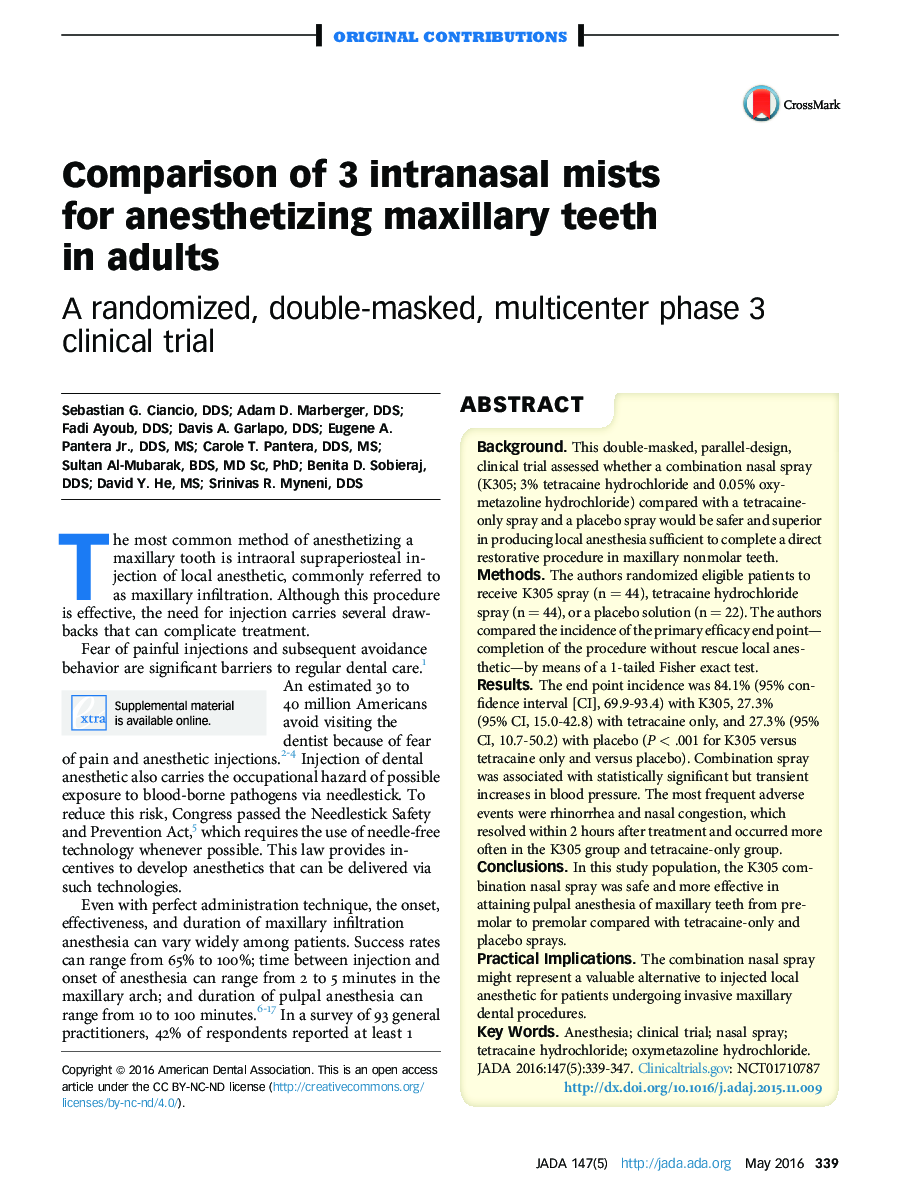| Article ID | Journal | Published Year | Pages | File Type |
|---|---|---|---|---|
| 6052528 | The Journal of the American Dental Association | 2016 | 10 Pages |
BackgroundThis double-masked, parallel-design, clinical trial assessed whether a combination nasal spray (K305; 3% tetracaine hydrochloride and 0.05% oxymetazoline hydrochloride) compared with a tetracaine-only spray and a placebo spray would be safer and superior in producing local anesthesia sufficient to complete a direct restorative procedure in maxillary nonmolar teeth.MethodsThe authors randomized eligible patients to receive K305 spray (n = 44), tetracaine hydrochloride spray (n = 44), or a placebo solution (n = 22). The authors compared the incidence of the primary efficacy end point-completion of the procedure without rescue local anesthetic-by means of a 1-tailed Fisher exact test.ResultsThe end point incidence was 84.1% (95% confidence interval [CI], 69.9-93.4) with K305, 27.3% (95% CI, 15.0-42.8) with tetracaine only, and 27.3% (95% CI, 10.7-50.2) with placebo (P < .001 for K305 versus tetracaine only and versus placebo). Combination spray was associated with statistically significant but transient increases in blood pressure. The most frequent adverse events were rhinorrhea and nasal congestion, which resolved within 2 hours after treatment and occurred more often in the K305 group and tetracaine-only group.ConclusionsIn this study population, the K305 combination nasal spray was safe and more effective in attaining pulpal anesthesia of maxillary teeth from premolar to premolar compared with tetracaine-only and placebo sprays.Practical ImplicationsThe combination nasal spray might represent a valuable alternative to injected local anesthetic for patients undergoing invasive maxillary dental procedures. Clinicaltrials.gov: NCT01710787
